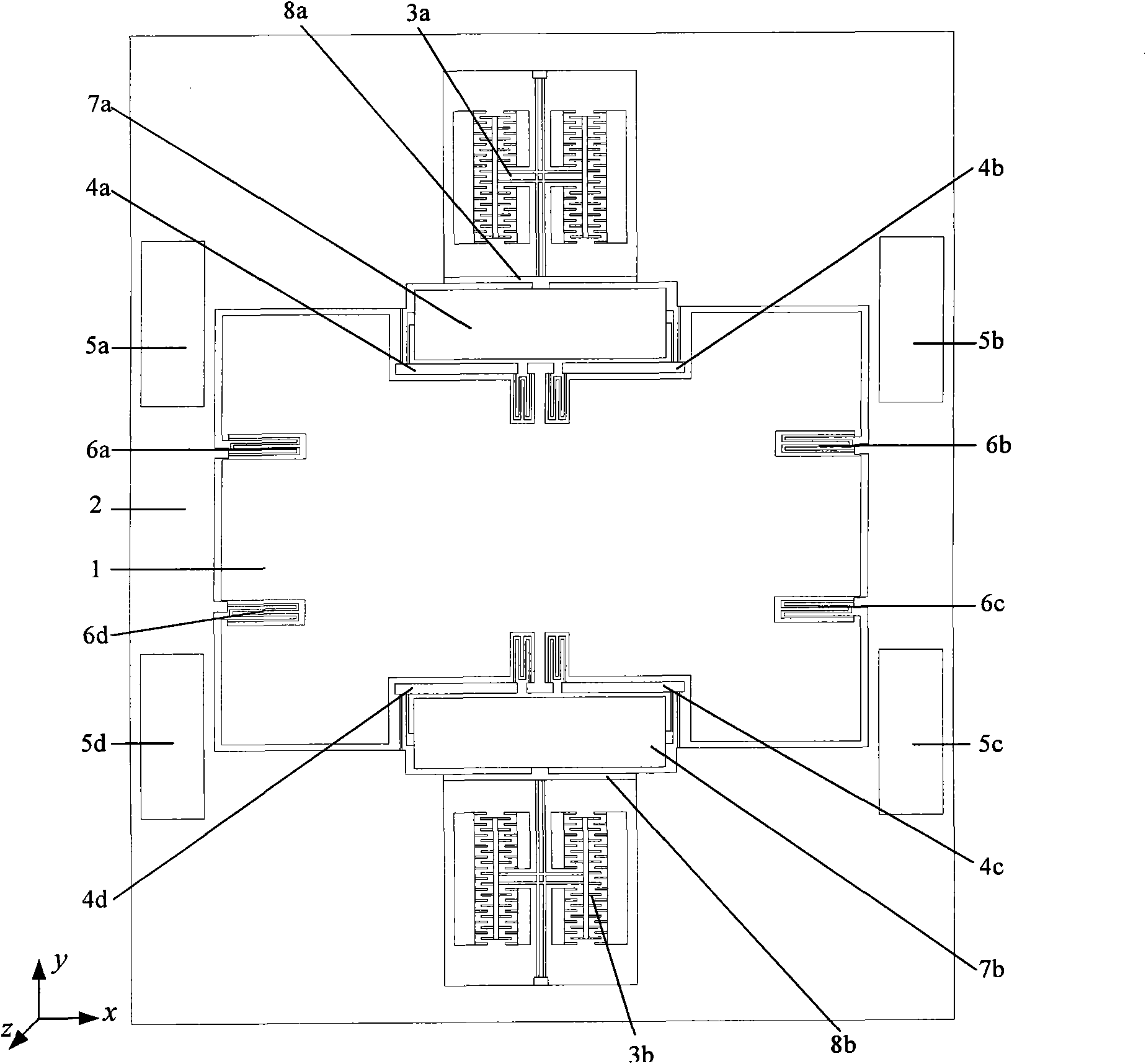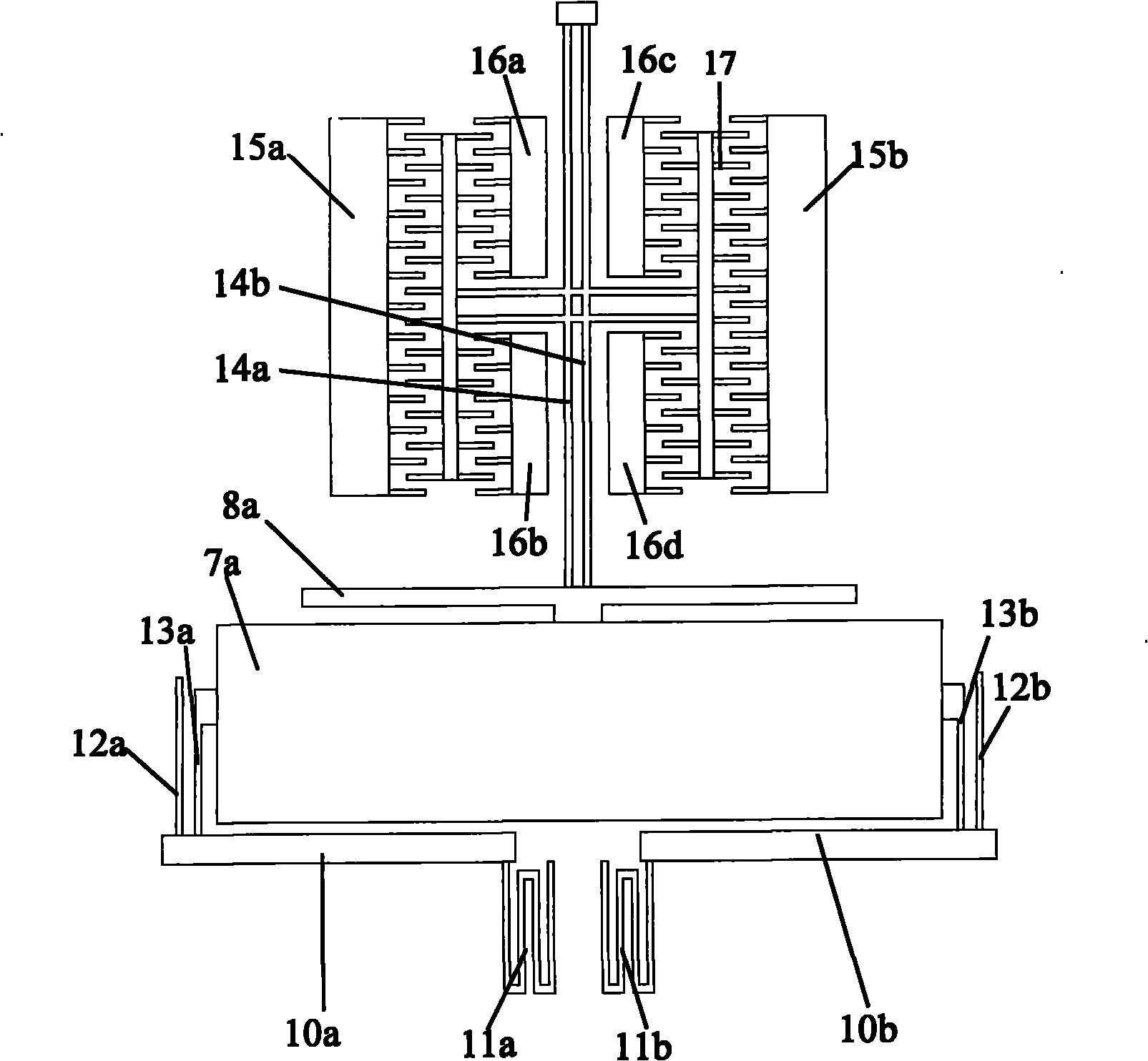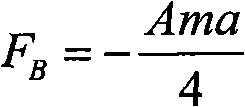Silicon micro-resonant accelerometer
An accelerometer and resonant technology, applied in the field of micro-inertial sensors, can solve the problems of not completely eliminating the influence of ambient temperature on device performance, high temperature coefficient of speedometer frequency, and inability to recognize acceleration signals, etc., to reduce cross-axis sensitivity , reduce the temperature coefficient, improve the stability and impact resistance
- Summary
- Abstract
- Description
- Claims
- Application Information
AI Technical Summary
Problems solved by technology
Method used
Image
Examples
Embodiment Construction
[0011] to combine figure 1 , the present invention is based on the resonant silicon micro-accelerometer, which is used to measure the measuring instrument parallel to the base level. It consists of upper and lower layers. signal leads on the substrate. The mechanical structure of the accelerometer consists of a mass block 1, an outer frame 2, a pair of resonators 3a, 3b and four identical primary lever amplification structures 4a, 4b, 4c, 4d, two rigid rods 7a, 7b and two Guide mechanism 8a, 8b is composed of mass block 1, two resonators 3a, 3b, four primary lever amplification mechanisms 4a, 4b, 4c, 4d, two rigid rods 7a, 7b and two guide mechanisms 8a, 8b Located in the outer frame 2. The mass block 1 is arranged in the middle of the accelerometer structure, and the first and second resonators 3a, 3b are symmetrically arranged at the upper and lower ends of the mass block 1. One end of the two resonators 3a, 3b is connected to the outer frame 2, and the first The other en...
PUM
 Login to View More
Login to View More Abstract
Description
Claims
Application Information
 Login to View More
Login to View More - R&D
- Intellectual Property
- Life Sciences
- Materials
- Tech Scout
- Unparalleled Data Quality
- Higher Quality Content
- 60% Fewer Hallucinations
Browse by: Latest US Patents, China's latest patents, Technical Efficacy Thesaurus, Application Domain, Technology Topic, Popular Technical Reports.
© 2025 PatSnap. All rights reserved.Legal|Privacy policy|Modern Slavery Act Transparency Statement|Sitemap|About US| Contact US: help@patsnap.com



